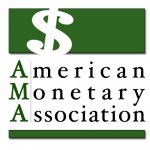 Worries of yet another “bubble” about to burst appear in financial news on a regular basis. After the term went mainstream a few years ago in connection with the rum-up to the historic housing crash, it continues to float up whenever there’s a surge of activity in one sector or another. Amid talk of a student loan bubble, a Fed stimulus bubble and various others looming, it might be time to take a look at what makes a bubble capable of striking fear into the hearts of economists.
Worries of yet another “bubble” about to burst appear in financial news on a regular basis. After the term went mainstream a few years ago in connection with the rum-up to the historic housing crash, it continues to float up whenever there’s a surge of activity in one sector or another. Amid talk of a student loan bubble, a Fed stimulus bubble and various others looming, it might be time to take a look at what makes a bubble capable of striking fear into the hearts of economists.
A recent guest post on the venerable finance site The Motley Fool attempted to find some explanations. And it turns out that the hot air that fills an economic bubble may be nothing more than a belief.
The term “bubble” first hit the headline sin connection with the granddaddy of all bubbles — the housing collapse of 2008. Before the collapses, there was the bubble – home prices were rising, housing market professionals believed they’d continue to rise, and easy mortgage lending ensured that there would continue to be buyers for all those homes.
But eventually, belief and reality met head to head and mortgages fell into default, causing the bottom to fall out of the housing market – the bust that happens when the bubble bursts. Based on this pattern, financial trend watchers are now worrying about a similar cycle related to out of control student loan debt. Fueled by the belief that rising college costs are inevitable and that loan debt is just a part of getting a degree, both private and federal loans are easy to get for large amounts. But they set students up for a burden they can’t sustain after they graduate.
Something similar may be happening in connection with the Federal Reserve’s bond buyup, a program that regularly changes direction in response to the ups and downs of various economic indicators. Because one reason for the plan is to provide a stimulus for housing by keeping interest rates low so more buyers can purchase homes, some financial experts fear that when the Fed finally does scale back its plans, rates will rise along with housing prices in a cycle that can’t be sustained.
The Fed’s bond buyup both affects the market and is affected by it. As indicators such as housing activity or gains in employment suggest a rosier economic outlook, Fed officials start talking about scaling back. If those and other indicators are down, then the Fed announces plans to accelerate the buyup.
That’s the way bubbles appear to work. Beliefs drive behaviors which then reinforce those beliefs, until the entire construct bursts and crashes. The takeaway for investors working with Jason Hartman’s principles for wealth building? When talk of a bubble float up, it’s wise to take a look at what creates the hot air inside. (Top imageL Flickr/antisocialtory)
Source:
Chandler. Bob. “The Fed’s Bubble: How Long Can It Last?” The Motley Fool. 9 Jun 2013.
Read more from The American Monetary Association:
Founding Documents: Back to the Basics
Terrorism Insurance? Yes . . .Sometimes
The American Monetary Association Team

